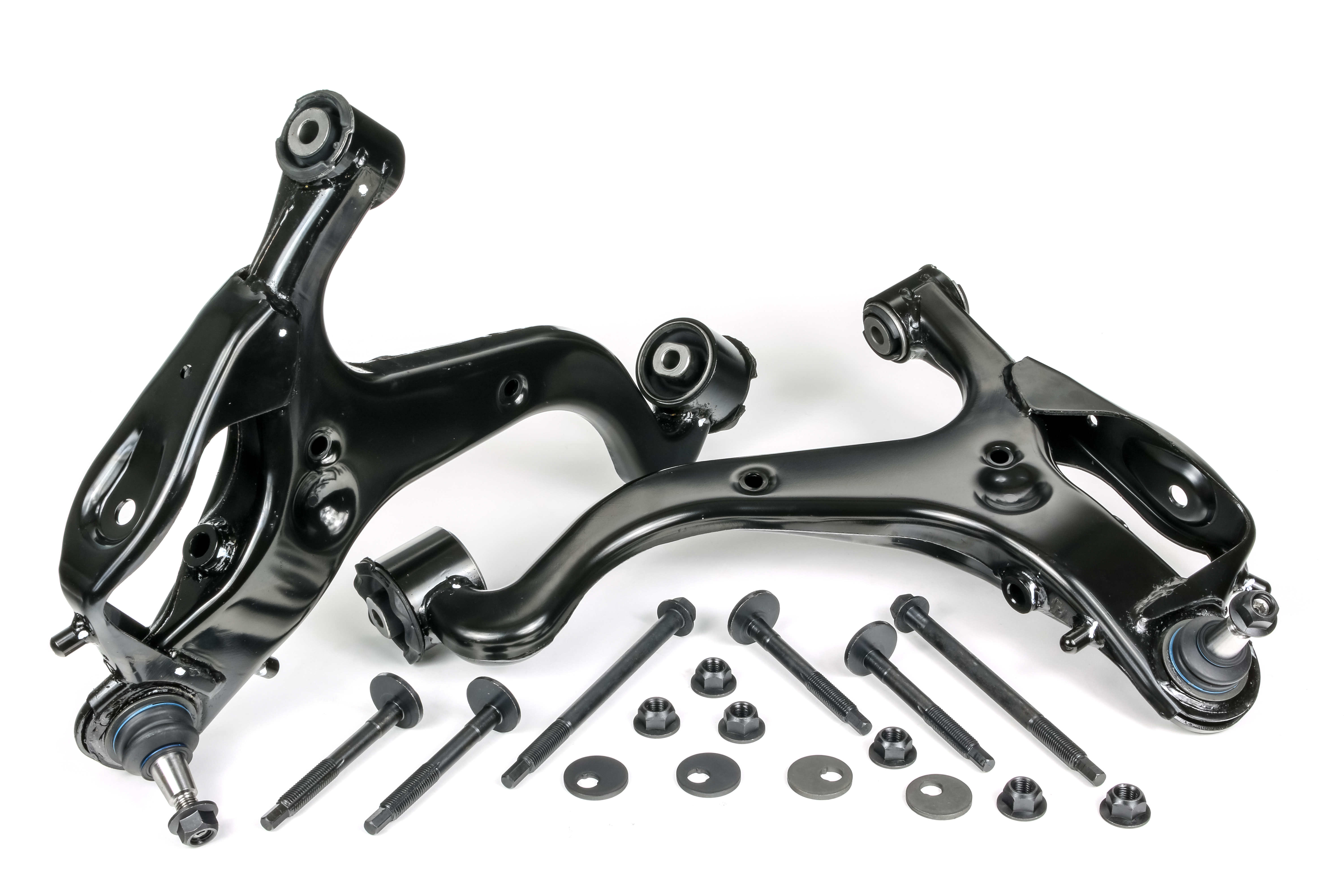By Jenni Wirtz | 27 October, 2021

First Line Ltd. has issued best practice advice on the common challenge of replacing the lower suspension arms on the Land Rover Discovery III/IV or Range Rover Sport.
First Line Ltd. recognises, that under normal conditions, suspension arms typically need to be replaced at around 75,000 to 85,000 miles due to the wear of the rubber bushes or other associated components.
As this wear can sometimes affect other components in the steering and suspension system, it is generally advised to replace suspension arms in pairs. However, in the case of the Land Rover Discovery III/IV or Range Rover Sport, the company is advising that problems can occur when removing the rear bush bolts.
Jon Roughley, Global Marketing Director for First Line Ltd, is shedding light on the issue, while offering helpful advice on best practice when replacing the lower suspension arms for these specific vehicles.
Identifying the issue
As the bushes in the arm have a metal sleeve running through them, which the bolt goes through, over time, exposure to the elements can cause rust to form, fusing the parts together and making it near-impossible to loosen or drive out.
If manoeuvring the part with penetrating oil does not release it, many technicians are left with no other choice but to cut through the bolts, in order to enable full removal.
Mind the nuts, bolts and washers
Depending on the model, some arm bolts are eccentric, with a matching eccentric washer. These are used to set the camber and castor angles correctly. Thus, before removing the bolts, First Line Ltd. is recommending that the existing bolts and washers are marked to help identify where they are located in the chassis mounting later on.
This will help position the new arm when it is installed, while minimising the amount of steering realignment required at the end of the job.
First Line Ltd. supplies new nuts, bolts and washers with suspension arms labelled with their ‘Includes Fittings’ logo on the packaging, and in many cases, as with the Discovery Arms, the bolts can also be purchased separately.
The company is advising technicians that it is best practice to remove the tie rod ball joint nuts, then the lower arm ball joint nuts followed by the adjacent bush bolts, emphasising that this allows the arm ball joints to be disconnected from their respective hubs, along with the tie rod ball joints.
Once completed, the steering and suspension specialist recommends removing the rear and front bush bolts from their chassis mounting to release the old suspension arm.
To make it easier for the technician, the company advises to re-fit all components, including the new bolts, in reverse order from their removal and abide by the manufacturer’s torque settings, before finally checking the vehicle’s steering geometry and correct alignment where necessary.
The company’s Steering and Suspension programme consists of more than 9,100 references, offering the aftermarket the right parts to get the job done for an extensive variety of vehicle.